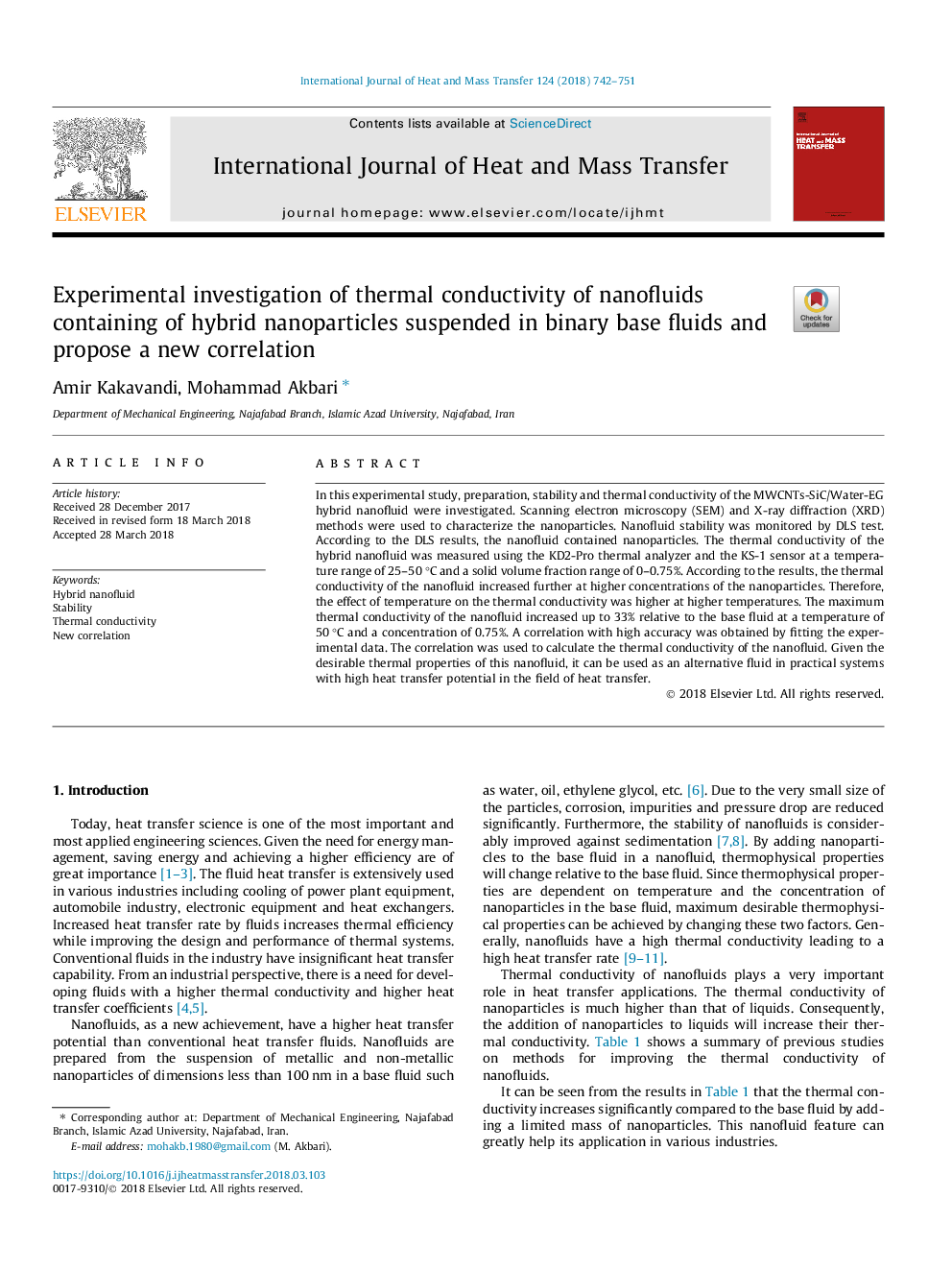| Article ID | Journal | Published Year | Pages | File Type |
|---|---|---|---|---|
| 7054228 | International Journal of Heat and Mass Transfer | 2018 | 10 Pages |
Abstract
In this experimental study, preparation, stability and thermal conductivity of the MWCNTs-SiC/Water-EG hybrid nanofluid were investigated. Scanning electron microscopy (SEM) and X-ray diffraction (XRD) methods were used to characterize the nanoparticles. Nanofluid stability was monitored by DLS test. According to the DLS results, the nanofluid contained nanoparticles. The thermal conductivity of the hybrid nanofluid was measured using the KD2-Pro thermal analyzer and the KS-1 sensor at a temperature range of 25-50â¯Â°C and a solid volume fraction range of 0-0.75%. According to the results, the thermal conductivity of the nanofluid increased further at higher concentrations of the nanoparticles. Therefore, the effect of temperature on the thermal conductivity was higher at higher temperatures. The maximum thermal conductivity of the nanofluid increased up to 33% relative to the base fluid at a temperature of 50â¯Â°C and a concentration of 0.75%. A correlation with high accuracy was obtained by fitting the experimental data. The correlation was used to calculate the thermal conductivity of the nanofluid. Given the desirable thermal properties of this nanofluid, it can be used as an alternative fluid in practical systems with high heat transfer potential in the field of heat transfer.
Related Topics
Physical Sciences and Engineering
Chemical Engineering
Fluid Flow and Transfer Processes
Authors
Amir Kakavandi, Mohammad Akbari,
